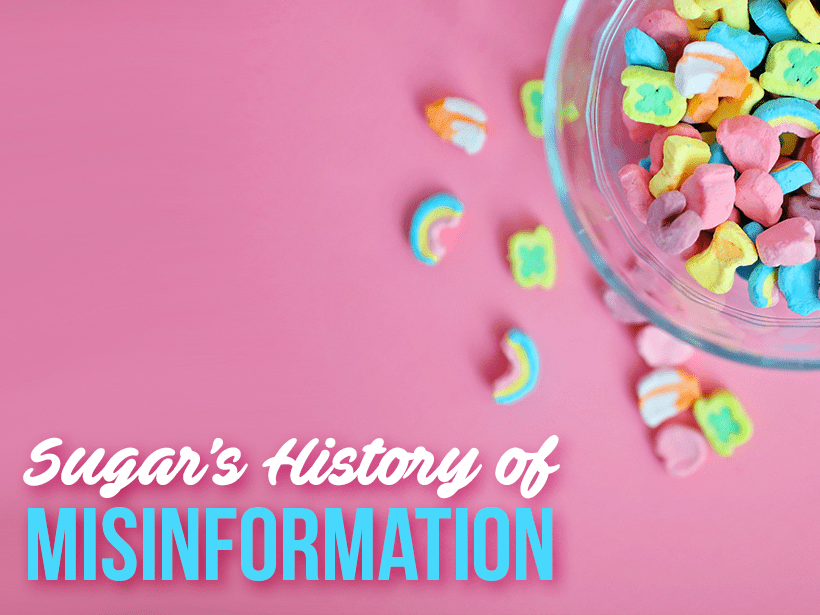On its website’s homepage, the Sugar Association (a trade group) calls itself the “scientific voice” of the sugar industry, determined to increase consumer confidence in “the role that sugar plays in a nutritious, balanced, and enjoyable diet.”1 Recently uncovered documents reveal just how true to its word the association has been. In the 1960s, the Sugar Association, known then as the Sugar Research Foundation, paid a group of Harvard scientists to produce a review that tempered growing concerns about sugar-related heart disease, and shift the blame to saturated fat.
The Review and its Consequences
In the 1950s, studies began to suggest the correlation of high-sugar diets to the rates of coronary heart disease. When John Hickson, sugar industry executive, reached out to the Harvard researchers in 1964, he had a clear idea of what he wanted: the researchers got hand-picked articles from the executives and sent their drafts to the Foundation for review, all in response to industry objectives.2 “Let me assure you this is quite what we had in mind,” said Hickson, “and we look forward to its appearance in print.”
The important question here is how much influence one review can possibly have had. According to Stanton Glanz, a professor of medicine at the University of California San Francisco and author of the recent findings, “They were able to derail the discussion about sugar for decades.”3 The influence these authors had in turning the nose of public criticism and government policy away from sugar and in the direction of saturated fats can still be felt today. One of the review authors, Mark Hegsted, went on to become the head of nutrition at the U.S. Department of Agriculture, where he used his research to draft “Dietary Goals for the United States” in 1977.4
A Manipulative Trend
The only real difference between then and now is that today’s journals are required to disclose funding, a mere speed bump in the progress of industry-funded research. A 2009 study by nutritionists at Louisiana State University suggested that children who ate candy were thinner than those who didn’t…and turned out to have been funded by another trade group representing the makers of Skittles, Butterfingers, and Hershey.5 The same scientists have since then published more than two dozen industry-funded papers, paid for by companies like Kellogg.
And finally, where would such a story be without a nod to Coca-Cola, who spent millions establishing the Global Energy Balance Network, a nonprofit designed to help scientists spread the message: worry less about the sugar in your diet and more about exercise.6 If there’s one thing to take away from all of this “science”-backed marketing, it’s that the sugar industry has successfully clouded the study of nutrition science. As a writer, I’m tempted to say something about “approaching sugar-related research with a grain of salt”; but I will spare you.
NUTRITIONAL DISCLAIMER
The content on this website should not be taken as medical advice and you should ALWAYS consult with your doctor before starting any diet or exercise program. We provide nutritional data for our recipes as a courtesy to our readers. We use Total Keto Diet app software to calculate the nutrition and we remove fiber and sugar alcohols, like erythritol, from the total carbohydrate count to get to the net carb count, as they do not affect your blood glucose levels. You should independently calculate nutritional information on your own and not rely on our data. The website or content herein is not intended to cure, prevent, diagnose or treat any disease. This website shall not be liable for adverse reactions or any other outcome resulting from the use of recipes or recommendations on the Website or actions you take as a result. Any action you take is strictly at your own risk.
- For Keto, the Everyday Research Says it All - March 6, 2019
- Huge Harvard Study Backs Up the Wide-Ranging Benefits of a Low-Carb Diet - February 25, 2019
- Experts Convene for Keto Conference - July 30, 2018





Great article. So important to continue to get the message out there about how the majority of research is conducted. I find it easy to forget that not everyone is aware that this goes on. Most people believe the scare tactic headlines they see in the news like “New study reveals sugar isn’t the bad guy”. Never do we hear that that study was funded by Coke or others. Thanks guys for this informative, concise article.